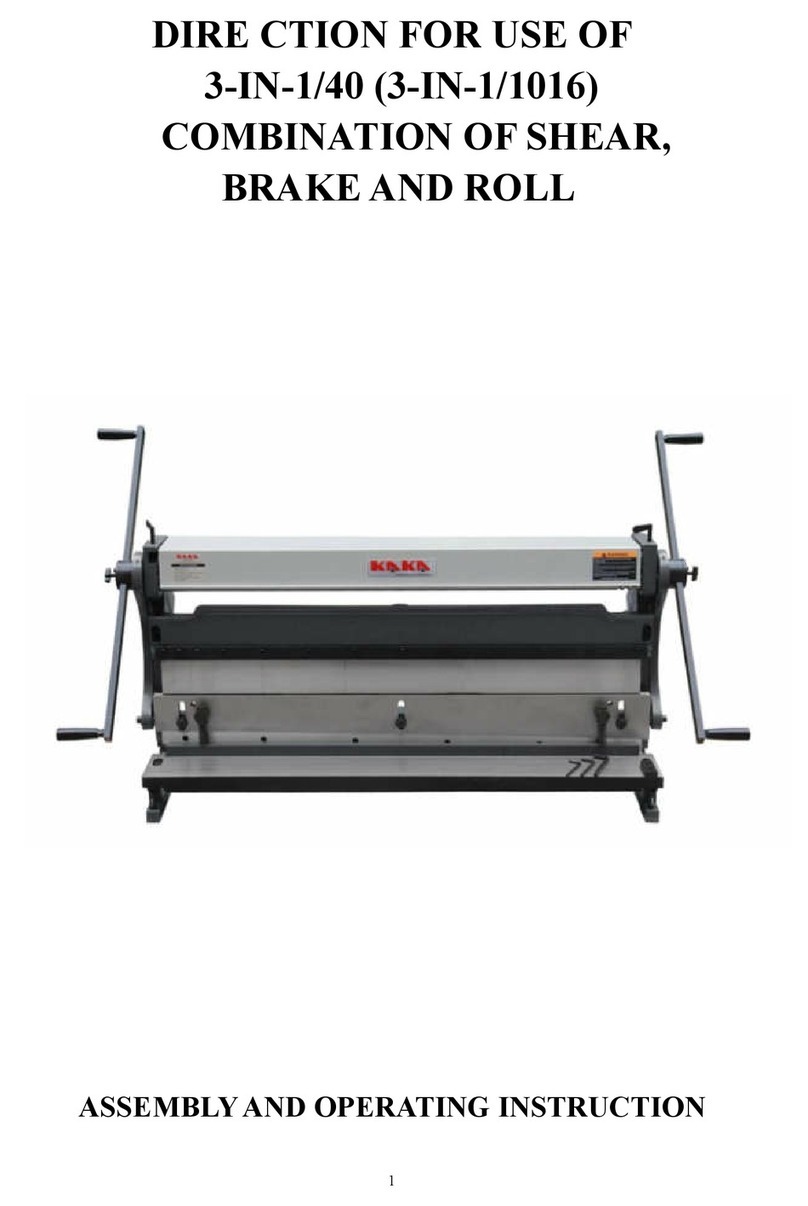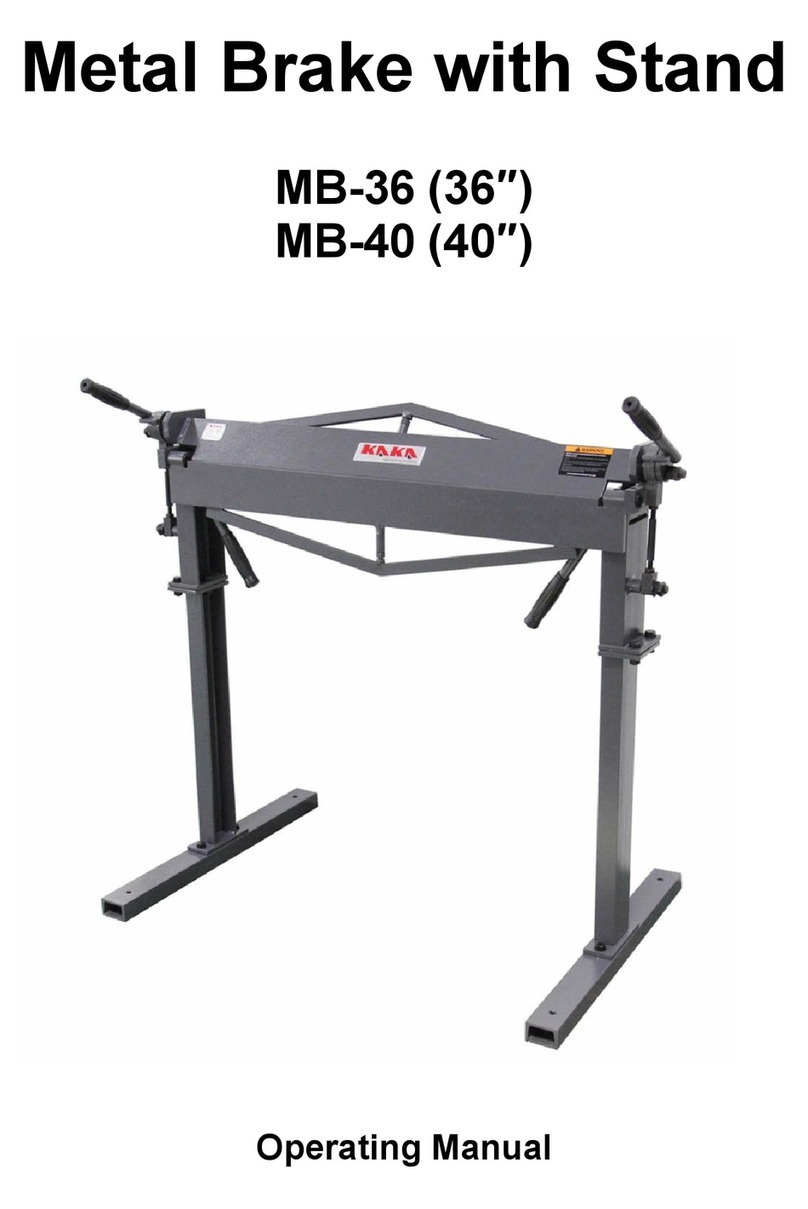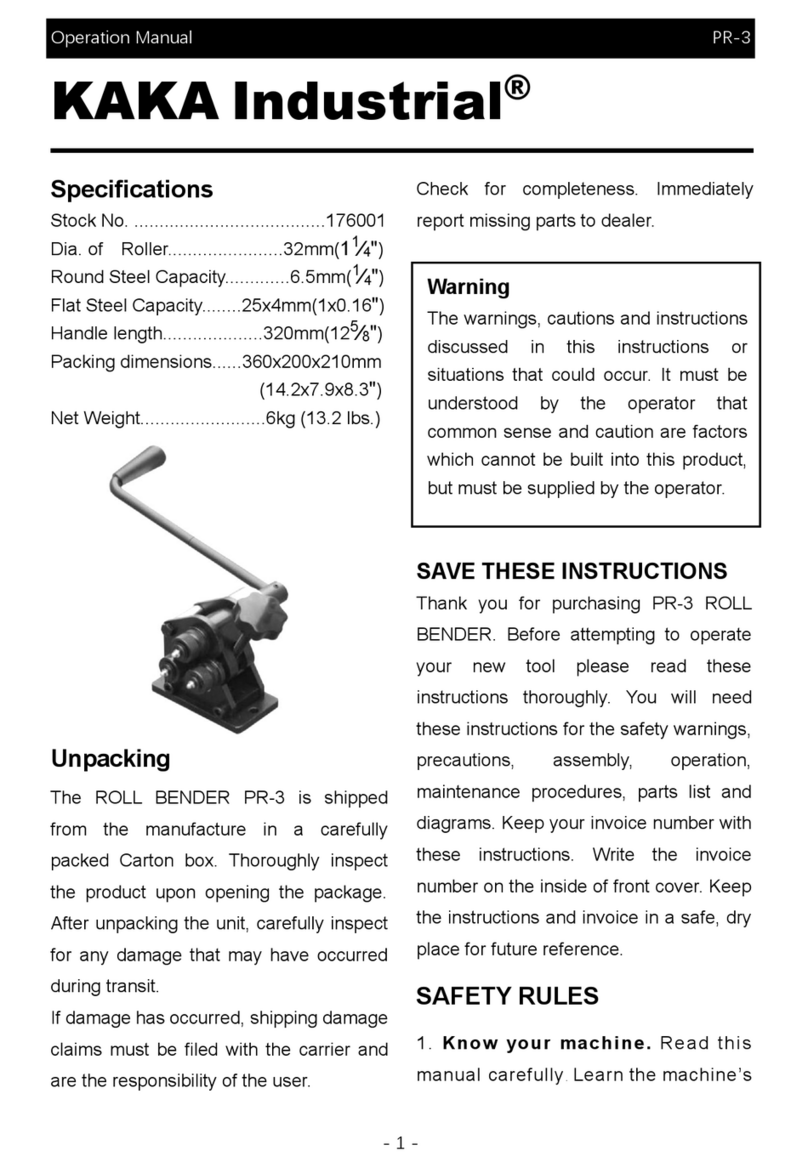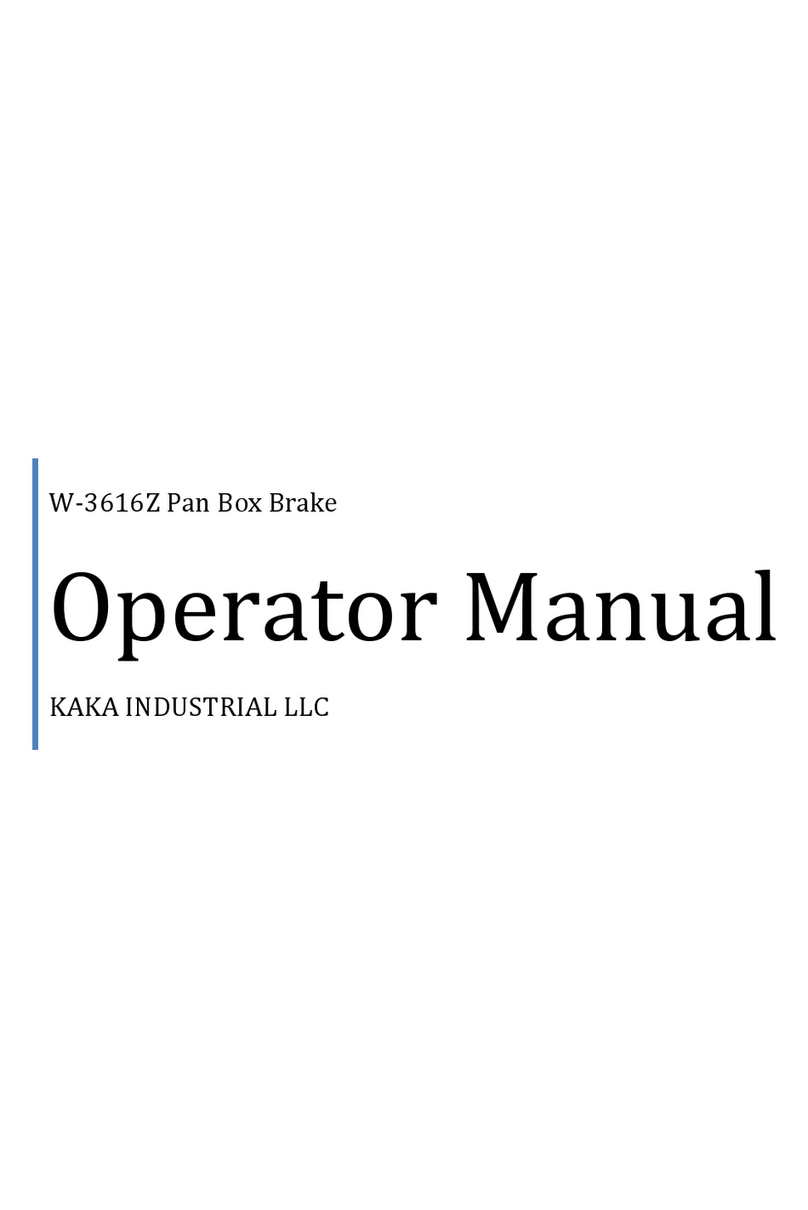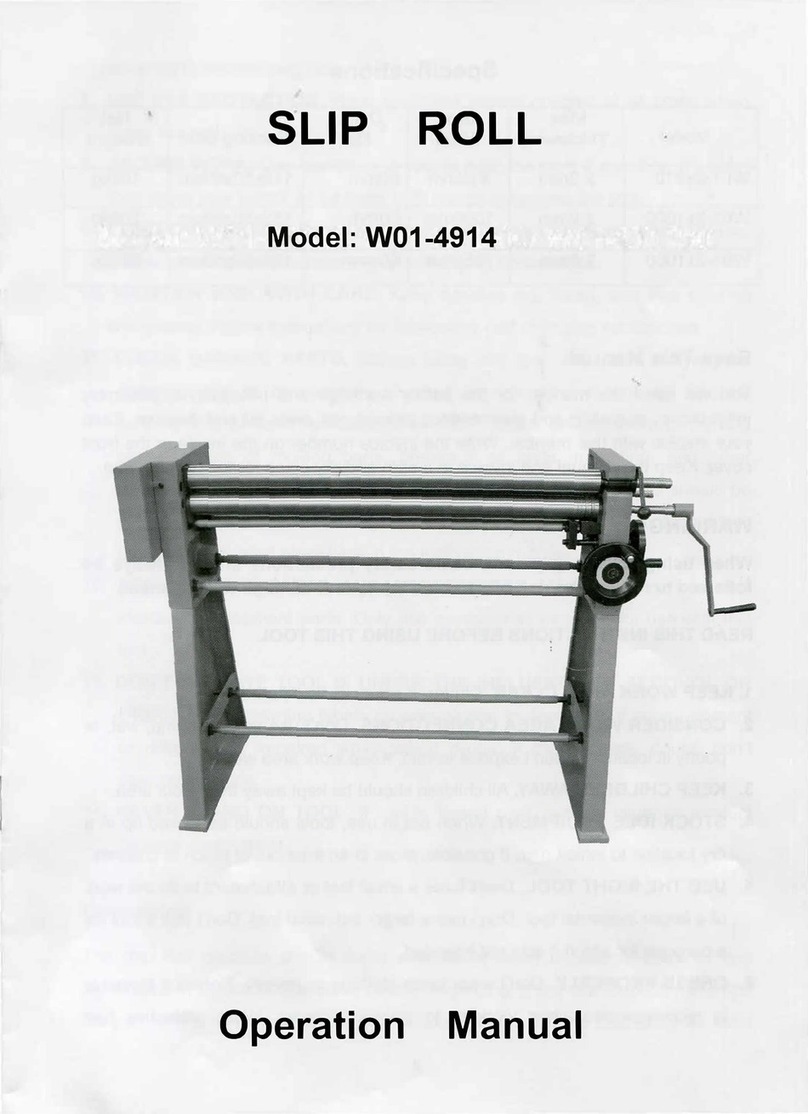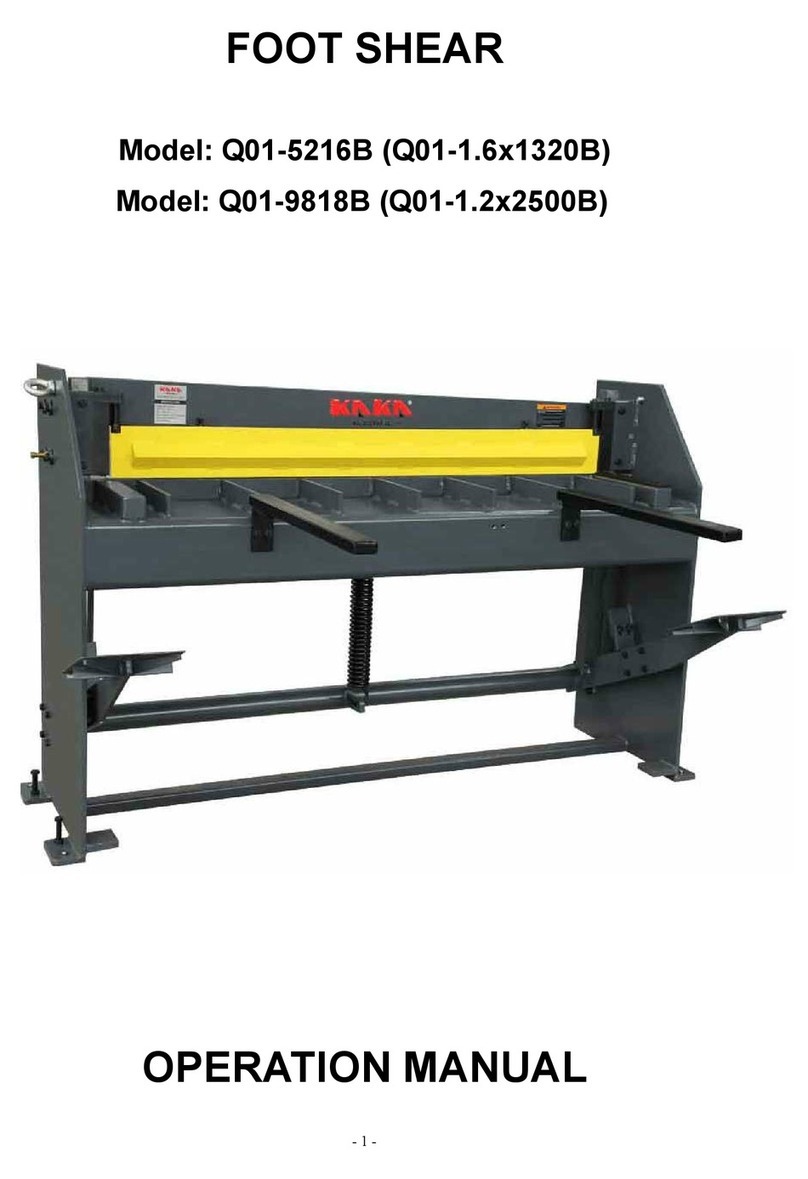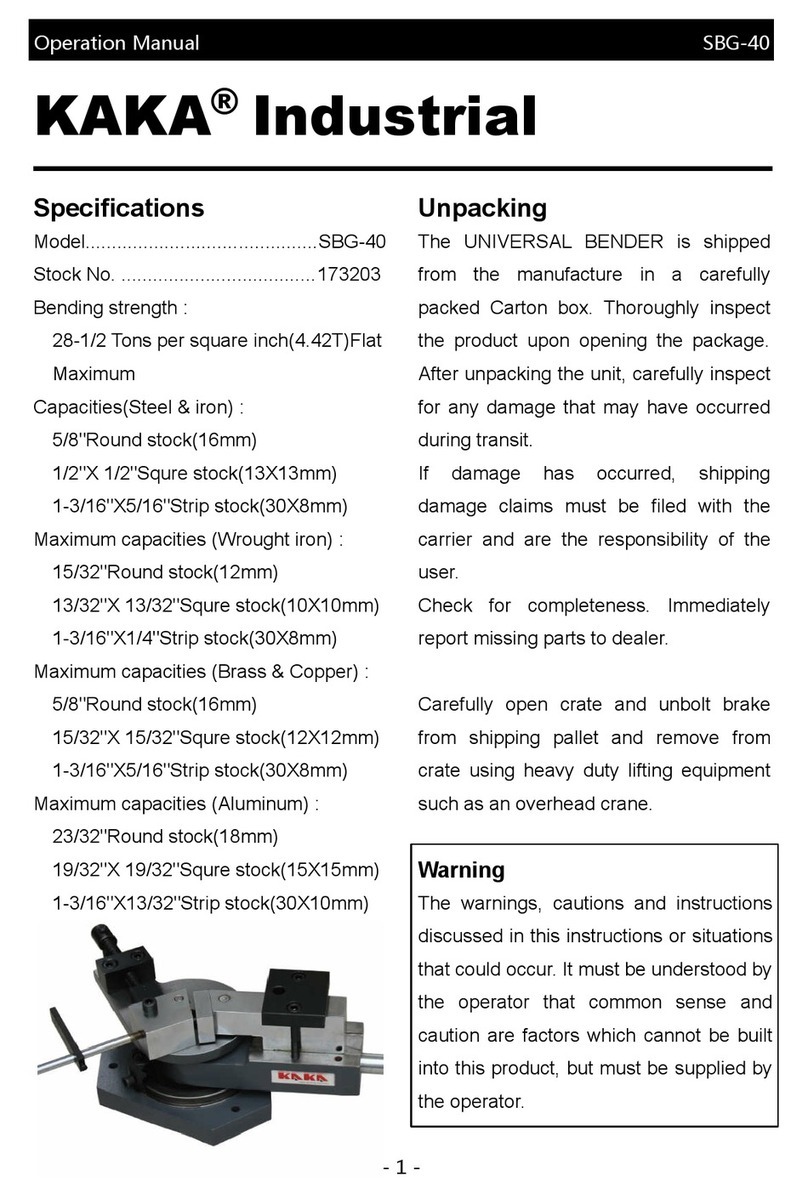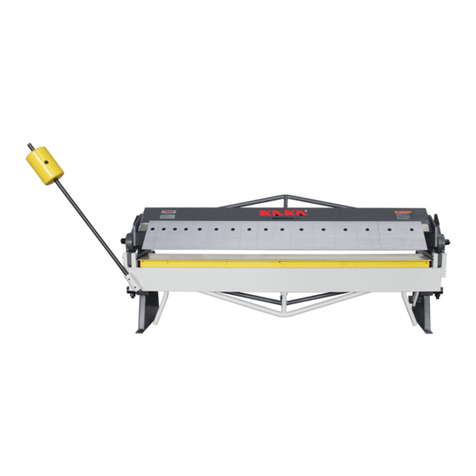●Space needed for auxiliary stands,
work tables, or other machinery.
●Clearance from walls and other
obstacles.
●Maintain an adequate working area
around the machine for safety.
●Have the work area well illuminated
with proper lighting.
●Keep the floor free of oil and make sure
it is not slippery.
●Remove scrap and waste materials
regularly, and make sure the work area is
free from obstructing objects.
●If long lengths of material are to be fed
into the machine, make sure that they will
not extend into any aisles.
Before beginning assembly, take note of
the following precautions and suggestions.
●LEVELING: The machine should be
sited on a level, concrete floor. Provisions
for securing it should be in position prior
to placing the machine. The accuracy of
any machine depends on the precise
placement of it to the mounting surface.
●FLOOR: This tool distributes a large
amount of weight over a small area. Make
certain that the floor is capable of
supporting the weight of the machine,
work stock, and the operator. The floor
should also be a level surface. If the unit
wobbles or rocks once in place, be sure
to eliminate by using shims.
●WORKING CLEARANCES: Take into
consideration the size of the material to
be processed. Make sure that you allow
enough space for you to operate the
machine freely.
Anchoring the Machine
●Position the machine on a firm and
level concrete floor.
●Maintain a safe operating distance
around the machine.
●Anchor the machine to the floor, as
shown in the diagram, using bolts and
expansion plugs or sunken tie rods that
connect through holes in the base of the
stand.
Adjusting the Setback
Setback is the distance from the front
edge of the finger to the front edge of the
clamp block as shown in (fig. 6). This
